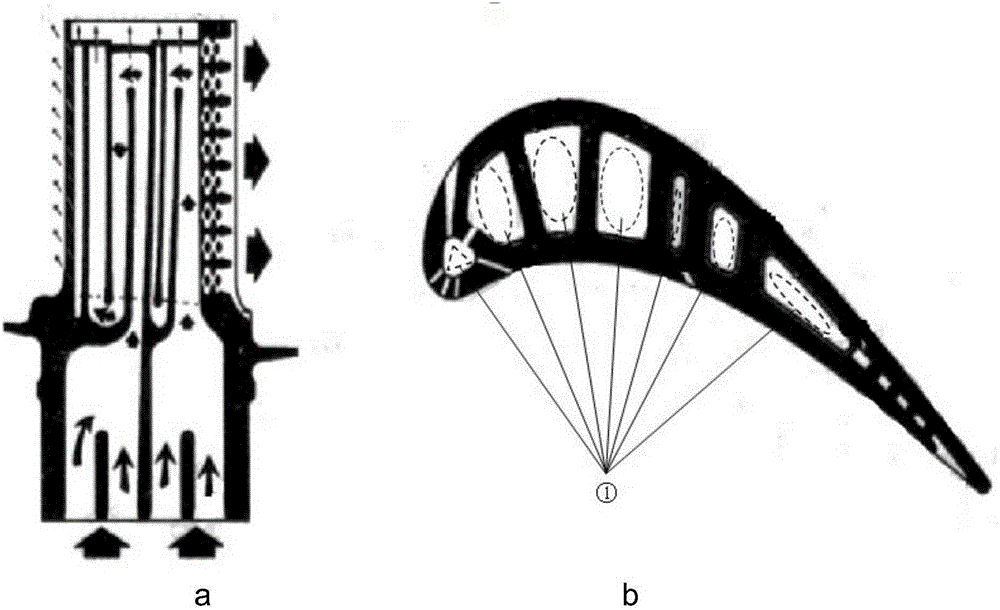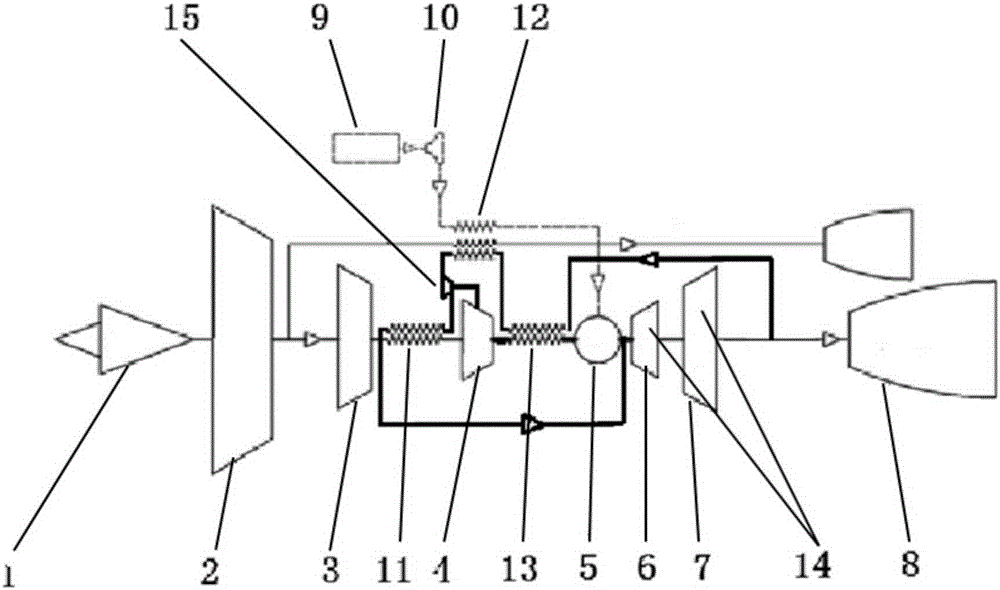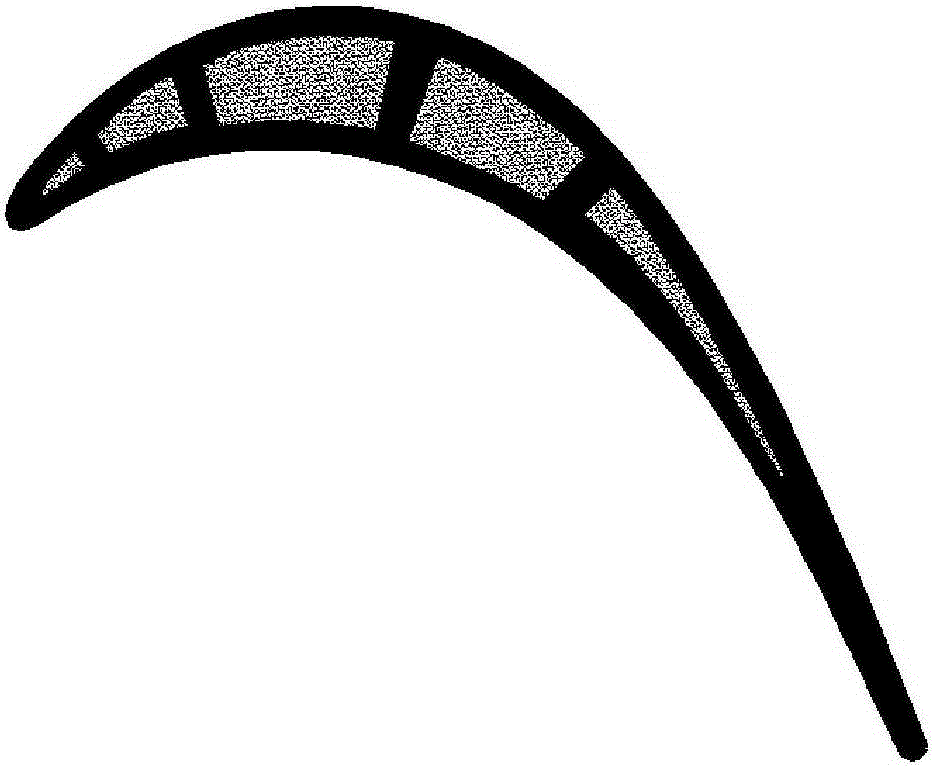An Advanced Turbine Cooling Method Based on Porous Media and Supercritical State Fluid Circulation
A technology of porous media and fluid circulation, applied in the direction of blade support components, engine components, machines/engines, etc., can solve the problems of reducing engine efficiency and small heat exchange area, and achieve high efficiency, high heat exchange intensity, and large efficiency The effect of the heat transfer area
- Summary
- Abstract
- Description
- Claims
- Application Information
AI Technical Summary
Problems solved by technology
Method used
Image
Examples
Embodiment 1
[0031] Such as Figure 4 As shown in a high-pressure turbine rotor blade, the shape of the blade has been aerodynamically designed to meet the overall performance requirements of the engine for the turbine components. The internal cooling channel of the turbine blade is designed as a single channel (such as Figure 4 As shown in ①), a rib is arranged inside the blade (such as Figure 4 ② in), and the structural form of this cooling channel is called a single-channel single-rib form. The porous medium is completely filled in the cooling channel in the blade. The pores of the porous medium are designed to be circular, with an average diameter of 300 microns, and the arrangement adopts sandstone-like accumulations. The supercritical fluid flows radially from the front end of the blade into the cooling channel and enters the porous medium, moves to the rear end in the form of seepage, and flows out of the blade with a flow rate of 80kg / s. Through this cooling method, the surfac...
Embodiment 2
[0034] A kind of advanced turbine blade cooling method based on porous medium and supercritical state fluid circulation in embodiment 1, wherein the cooling channel in the turbine is Figure 5 The single channel shown ( Figure 5 In ①) three ribs ( Figure 5 ②) in the structural form.
Embodiment 3
[0036] A kind of advanced turbine blade cooling method based on porous medium and supercritical state fluid circulation in embodiment 1, wherein the cooling channel in the turbine is Figure 6 The dual channel shown ( Figure 6 ①② in the three ribs ( Figure 6 ③) in the structural form.
PUM
 Login to View More
Login to View More Abstract
Description
Claims
Application Information
 Login to View More
Login to View More - R&D
- Intellectual Property
- Life Sciences
- Materials
- Tech Scout
- Unparalleled Data Quality
- Higher Quality Content
- 60% Fewer Hallucinations
Browse by: Latest US Patents, China's latest patents, Technical Efficacy Thesaurus, Application Domain, Technology Topic, Popular Technical Reports.
© 2025 PatSnap. All rights reserved.Legal|Privacy policy|Modern Slavery Act Transparency Statement|Sitemap|About US| Contact US: help@patsnap.com



